The Daily Northwestern
12 SPORTS/Martinelli Martinelli game-winner sparks 77-75 win


12 SPORTS/Martinelli Martinelli game-winner sparks 77-75 win

Five institutions accused of antisemitism
By LEAH SCHROEDER daily senior staffer
@lmschroeder_
Following a Jan. 29 executive order designed to combat antisemitism, the U.S. Department of Education launched investigations into fve institutions of higher education Monday, including Northwestern.
According to a Department of Education press release, widespread antisemitic activity has been reported at each of the fve institutions, which includes: Columbia University; Portland State University; University of California, Berkeley; University of Minnesota, Twin Cities; and NU.
“The investigations are in response to the explosion of antisemitism on American campuses following the Hamas massacre of Israeli civilians on Oct. 7, 2023,” the Department of Education’s website said.
Te Department’s Ofce for Civil Rights opened the investigations under Title VI of the Civil Rights Act, which “protects students from discrimination and harassment based on national
origin, including shared ancestry.”
Tese investigations follow a Dec. 18 U.S. House of Representatives Staf Report on Antisemitism, which found a “troubling rise of hate and extremism” at universities, including NU.
In the report, University President Michael Schill was singled out for misleading Congress, “actively entertain(ing) the request” to hire an “anti-Zionist rabbi,” and puting “anti-Israel faculty” in charge of negotiations to end the encampment on Deering Meadow, among other allegations.
Te Department of Education will work with the Department of Justice and the Department of Health and Human Services to conduct these investigations and combat antisemitism.
“Today, the Department is puting universities, colleges and K-12 schools on notice: this administration will not tolerate continued institutional indiference to the wellbeing of Jewish students on American campuses, nor will it stand by idly if universities fail to combat Jew hatred and the unlawful harassment and violence it animates,” Acting Assistant Secretary for Civil Rights Craig Trainor said in the press release.
leahschroeder2026@u.northwestern.edu
AUDIO/Health Hub
Scan this QR code to hear about Evanston’s new Health Hub
5 A&E/Severance
NU freshman Sarah Bock breaks out in ‘Severance’

By NINETH KANIESKI KOSO daily senior staffer
Around 100 students protested in honor of lives lost in Lebanon, Syria and Palestine by Te Rock on Oct. 7 , 2024
around 1 p.m., using bullhorns and other sound amplifers. Te protest was in direct violation of a new demonstration policy established in the wake of April’s pro-Palestinian encampment.
The next day, some students who atended the protest
By SHUN GRAVES daily senior staffer @realshungraves
Evanston Fire Department crews had just rescued a dog in distress from the icy Dog Beach Jan. 25. The firefighters had started packing up their equipment when they got the word. Another dog down.
“A guy comes up to us and says, ‘Hey, there’s a dog in the water,’” Capt. Ryan Roeder told Te Daily.
“Sir, we know,” Roeder remembers responding. But then the man continued.
A second dog had slipped into the water, he told Roeder. In the exact same spot. So dog rescue No. 2 began.
The second dog met the same fate as the frst: safe and sound. With the potential canine catastrophe averted, the city closed the Dog Beach that same day, citing “serious safety concerns.”
On Sunday, with the ice mostly melted, the city announced it reopened the beach, located at 1811 Sheridan Road. Some Evanston dog

owners reacted with jubilation afer the weeklong closure. Yet the memory of that near-fateful day runs deep.
Shift Chief Tim Migon arrived frst on the scene. Te fre department had just heard that a dog fell of an ice shelf and couldn’t get out of the water. A crowd had gathered, he said.
“I drove out to the south end of the Dog Beach,” Migon said. “And there I could see a lady leaning over the ice shelf and a bunch of people calling for help.”
He directed “all incoming companies” toward the south end, he added. They responded swiftly. Some firefighters hopped the Dog Beach fence, Roeder said. One truck company cut through the barrier.

Te drenched dog appeared to have climbed onto an ice shelf. A woman on her stomach held onto the leash, Roeder added. Te dog needed a lif Roeder dropped a 14-foot ladder in the water. Tat helped the crew assess its depth, about 6 feet, he said. A firefighter wearing a yellow Mustang Survival drysuit climbed on the ladder.
“He was close enough to then grab the dog and hand it up to the other fremen that were waiting right on the ice shelf,” Roeder said. “ Tat was dog No. 1.”
“Dog was in good condition,
happy,” Migon added. “The owners were ecstatic. People were cheering all around.”
Te crews returned to their trucks. Te Mustang suits came of Tey packed up.
received notices from the Ofce of Community Standards identifying them as participants and notifying them that OCS was reviewing the policy violation. One NU student, who requested anonymity for fear of retribution, said they did not
participate in the protest on Oct. 7. Instead, they recorded the demonstration as a bystander while wearing a kefyeh. But one day afer the protest, they — along with other » See DEMONSTRATIONS , page 7
Nine seats open for reelection as April 1 election nears
By MARISA GUERRA ECHEVERRIA the daily northwestern @marisa_g_ech
In a recent furry of campaign activity, candidates for Evanston’s nine City Council seats have knocked on doors, sent out pamphlets and hosted events as the April 1 election looms.
Tese eforts come as both mayoral candidates, Mayor Daniel Biss and Jeff Boarini, each launched campaign events in the past month, with City Council candidates staking their spots in each camp. On Saturday and Sunday, Biss coordinated a “Weekend of Action” for voter outreach throughout the city.
A total of 19 residents are running for City Council seats, including one write-in candidate.
Tere are two open seats in the election following the retirement of Alds. Melissa Wynne (3rd) and Eleanor Revelle (7th). Only one incumbent runs
unopposed for his seat: Ald. Juan Geracaris (9th). Te rest are two-candidate face-ofs, except for the highly competitive 2nd and 3rd wards, which sport three candidates each.
While incumbent Ald. Krissie Harris (2nd) noted she faces a more competitive race than some of her council colleagues, she said she is “happy that people are engaged.” As the incumbent in her race, Harris said she aspires to atend more events, activities and rallies throughout every ward to show her continued dedication to the ofce.
“I can go from fve things in the day — to the least I’ve had is one,” Harris added. “And I’ve had to be at six diferent places in one day.”
Door-knocking ups and downs
For newer challengers seeking to stake their claims in city politics, one of the most valuable forms of outreach is knocking on residents’ doors.
While the January weather proved unforgiving for
» See CAMPAIGNS , page 10
By KAMRAN NIA the daily northwestern @kamran_nia
Howard Street’s Best Buy will close March 1 , leaving customers to browse the electronics retailer’s website or drive outside the city to other locations in Skokie and Norridge.
The shutdown comes as the company shuts down stores nationwide amid declining sales after the COVID- 19 pandemic, according to The Verge. The Evanston Best Buy permanently closing its doors follows fellow Evanston big box store Office Depot shuttering in October 2024
A store employee confirmed Best Buy’s closing date with The Daily. The company did not respond to a request for comment.
Some customers are sad about Best Buy’s upcoming closure, reckoning with a transition to online shopping to avoid driving longer to other locations.
Evanston resident Neville Allen said he plans to shop online because he is not aware of similar stores nearby. Consequently, he said he will miss buying products like chargers or adapters on short notice because the closest store to him now will be in Skokie.
Neville added that Best Buy — one of few big box electronics stores in Evanston — is helpful beyond shopping needs because it offers technological support.
“It is sad that they are closing because it is convenient for us that live in Evanston,” Allen said.
Pat Fraser visited the Best Buy location Sunday to say goodbye to employees. She said she will miss the convenience of the store and is concerned about the employees’ futures.
“Every time I’ve come here, I’ve gotten great service,” Fraser said. “These guys are wonderful in here. … I hope they all get jobs.”
Steven Wolfe grew up shopping at Best Buy and said while the store’s closing is bittersweet, he is not opposed to shopping online for electronics.
Some stock was already off the shelves, with

multiple sections nearly empty on Sunday, a month before the closing date. Other electronics stores, like Gadgetworks in Evanston, meet some of the same demands as Best Buy, but
none appear to offer the same amount of product as big-box stores.
“Brick and mortar is important. It was an opportunity for a lot of people,” Wolfe said.
“Economically, it’s kind of sad, but at the same time, it’s better for the consumer pocket.”
kamrannia 2027 @u.northwestern.edu
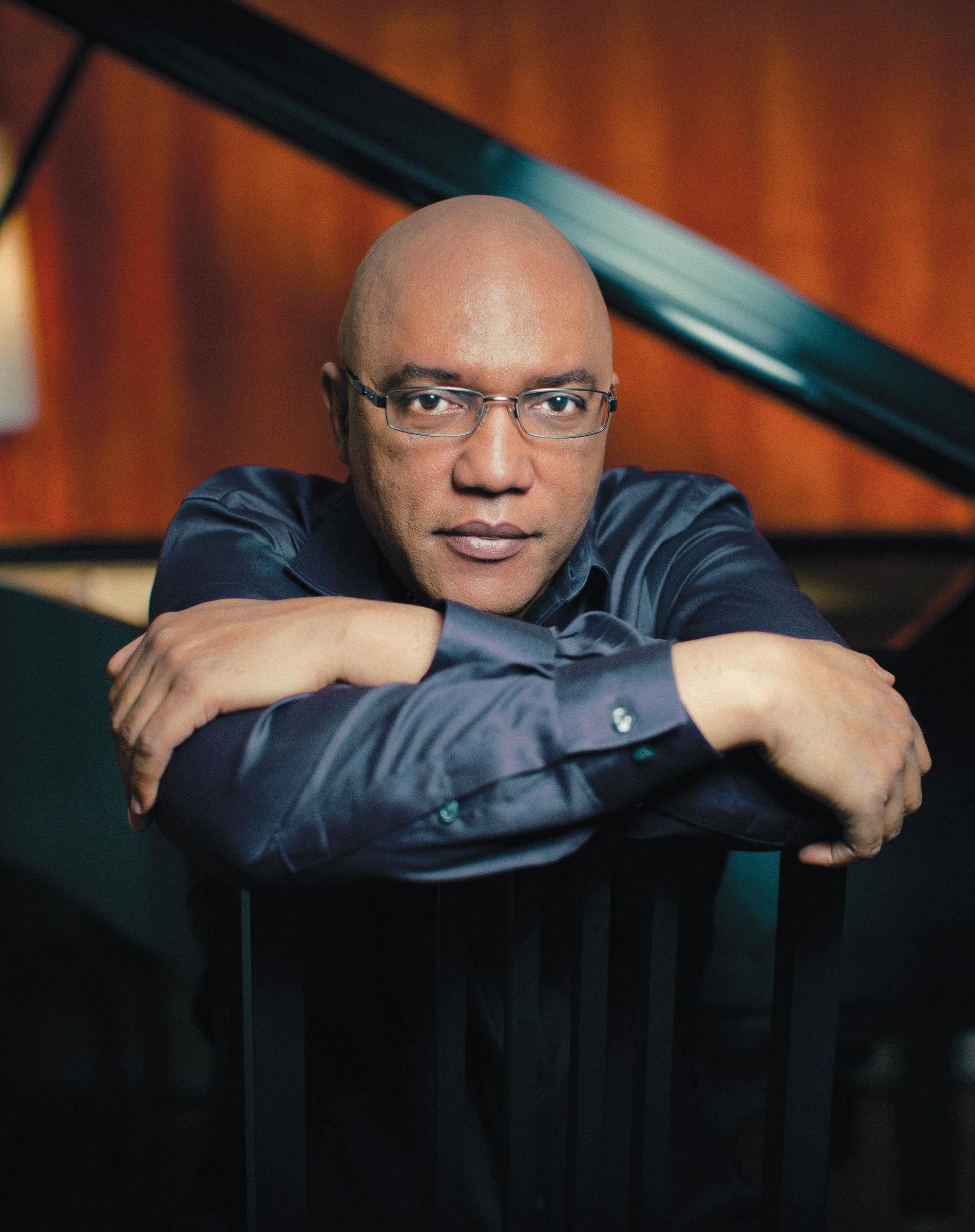

Students Publishing Company, Inc. manages and guides the long-range planning of The Daily Northwestern and the Syllabus Yearbook. We have two–three student board member positions beginning Spring ‘25. Undergraduate and graduate students are encouraged to apply. The Board meets approximately two times per quarter.

For an application, contact Stacia at s-campbell@northwestern.edu.
Deadline for Submission: Monday, Feb. 24, 2025
By MARY RANDOLPH daily senior staffer @marywrandolph
Northwestern researchers have investigated everything from astrophysics to impacts of incarceration to “super-agers” over the past decade as the University continues to expand its research programming.
Te Ofce for Research announced in September the school has seen a 75% increase in research funding since 2014, and that amount jumped 5% in 2024 alone.
Research funding comes from a mix of federal investments, collaboration with other institutions and philanthropy. In the 2024 fscal year, NU received $1 05 billion in overall research funding, more than $743 4 million of which came from federal grants and investment. In the event of a federal funding freeze, the future of these investments could be impacted.
$741 9 million of the funding went toward projects at Feinberg School of Medicine, including a $55 million investment for NU’s Clinical and Translational Sciences Institute from the National Institute of Health. Weinberg College of Arts and Sciences, McCormick School of Engineering and universitywide research centers also brought in at least $70 million each.
In an email to Te Daily, Vice President for Research Eric J. Perreault said in the past decade, the school has highlighted interdisciplinary research and invested in support for grant-writing and development.
“NU has focused on recruiting top-tier faculty and creating a collaborative research culture across disciplines, departments and schools,” Perreault wrote. “Tis culture encourages partnerships and large-scale research projects that atract signifcant external funding.”
In the 2024 fscal year, NU researchers submited 3,837 proposals — a jump from 3,575 in 2023 Tis refects a steady increase in proposals submited and chosen in the past decade, a process which can take months or years, including submiting, revising and undergoing review.
Tis process took more than two years for a team of McCormick researchers, led by Mechanical Engineering Profs. Ed Colgate and Kevin Lynch,

who received a $26 million investment in June from the National Science Foundation. Colgate said the application process spanned more than two years and involved several lengthy proposals, a site visit to NU and giving panel presentations.
Over the next 5 years, the team will use the investment to build an Engineering Research Center for dexterous robots in collaboration with four other institutions. He noted that NU administration, including McCormick Dean Christopher Schuh, and the Ofce for Research, ofered crucial support as the team showed how their project would increase innovation, bring in new faculty and move the feld of robotics forward.
“We showed how we were taking a diverse group of people from fve core institutions spread over a good chunk of the country and pulling them together to really share a vision and a plan,” Colgate said.
Colgate has been a part of the McCormick faculty since 1988 Tough most of his prior research has not required this level of funding, he’s observed the evolution of NU’s research priorities and scale, he said.
He said the progress has been “a joyful thing to witness.”
“I can’t point to one single event or policy, but there has been a commitment to excellence, a lot of investment in infrastructure, and a commitment to hiring truly outstanding faculty and supporting them once they’re here,” Colgate said.

In his statement, Perrault added that the school has facilitated an “outstanding research ecosystem” that supports not only large scale research but also impactful theoretical and humanities research that requires less funding.
In the 2025 fscal year, the University has already seen an increase in proposals submitted and grants awarded compared to the 2024 fscal year.
Perreault wrote that the Ofce for Research hopes to see more interdisciplinary research and real-world research applications moving forward. He noted evolving faculty interest drives research initiatives but that several topics, such as quantum information systems, synthetic biology and AIaccelerated science, are top-of-mind for research teams right now.
“Faculty excellence defnes the University and broadly shapes the range of investigations we undertake,” Perreault wrote.
With technology and science landscapes constantly changing, Colgate said he expects some research felds will become “more or less unrecognizable” in the next decade.
NU will need a constant stream of innovation and creativity to keep up with the pace of change in academia and the political climate, he said.
“I expect there’ll be some massive challenges, but I think this is a university that’s up to it, and it’s going to meet those challenges,” Colgate said.
maryrandolph2026@u.northwestern.edu
The Daily Northwestern www.dailynorthwestern.com
Editor in Chief Lily Ogburn eic@dailynorthwestern.com
General Manager Stacia Campbell stacia@dailynorthwestern.com
Holly and John Madigan Newsroom
Phone | 847 491 3222
Campus desk
campus@dailynorthwestern.com
City desk city@dailynorthwestern.com
Sports desk sports@dailynorthwestern.com
Ad Office | 847 491 7206 spc-compshop@northwestern.edu
THE DAILY NORTHWESTERN is published every Wednesday during the academic year, except vacation periods and two weeks preceding them and once during August, by Students Publishing Co., Inc. of Northwestern University, 1999 Campus Drive, Evanston, IL 60208; 847491-7206.
First copy of THE DAILY is free, additional copies are 50 cents. All material published herein, except advertising or where indicated otherwise, is Copyright 2025 THE DAILY NORTHWESTERN and protected under the “work made for hire” and “periodical publication” clauses of copyright law.
POSTMASTER: Send address changes to THE DAILY NORTHWESTERN, 1999 Campus Drive, Evanston, IL 60208. Subscriptions are $100 for the academic year. THE DAILY NORTHWESTERN is not responsible for more than one incorrect ad insertion. All display ad corrections must be received by 3 p.m. one day prior to when the ad is run.


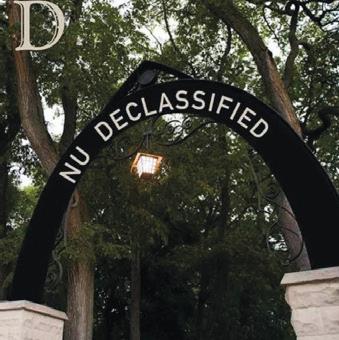
































By DESIREE LUO
dail( )orth,e-ter)
the
Mee-Ow, Northwestern’s longest-running student comedy and improv group, returned with “The Mee-Owgic School Bus” this past weekend at Shanley Pavilion.
While preparing for the annual Mee-Ow Show, Communication senior and Mee-Ow codirector Brenden Dahl said he began watching “The Magic School Bus” on Netflix.
“I went back and watched a really trippy episode where they all transform into literal water,” Dahl said. “This show is wild.”
Traditionally, the opening sketch of the MeeOw Show is based on the show’s theme. This opener parodies “The Magic School Bus,” Dahl said.
All cast members played different children in the class, with the exception of Communication senior and co-director Shai Bardin, who played
the red-haired teacher Ms. Frizzle.
“Let’s just say that it escalates to the magic school bus getting pulled over by the cops,” Dahl said.
During the first two weeks of Winter Quarter, the cast of eight met Monday through Thursday for four-hour long sketch workshops and held improv practice on Fridays, Bardin said. Each cast member wrote eight to .0 sketches to be considered for use in the show.
Bardin said the process of picking sketches, writing the opening sketch and learning the show’s dance number all occurred the following week, known as tech week.
“It makes Winter Quarter really fun,” Bardin said. “Yes, it’s super cold, and that can be depressing, but at night, I get to laugh for four hours straight.”
Bardin said cast members voted for the theme out of 50 total pitches, all of which were puns on “Mee-Ow.” Proposals included “High School Mee-Owsical” and “The Mee-Owppet
Show.”
Another popular pitch was “Take Mee-Owt to the Ball Game,” but the theme had already been used twice in Mee-Ow’s 5. -year history, Bardin said.
Even with such an extensive history, the MeeOw Show shows remain fresh through improv, Dahl said. The show’s format is one-third sketch comedy, one-third improv and one-third music.
“No two shows are the same,” Dahl said. “Every show has its own energy.”
The production team follows a similarly tight schedule as the actors. Communication junior and show producer Zoe Davis said technical work only begins after the cast selects sketches.
Davis said they and the co-scenic designers spent last weekend in Shanley Pavilion painting set pieces, which centered around a yellow school bus with photos of cast members’ faces attached.
Communication junior and light designer
Sam Bessler said his favorite part of the light design is the headlight near the front of the bus. The headlight changed colors to signal location changes or movement in the sketch.
For Bessler, the quick pace from concept to stage differed from his usual approach of completing detailed lighting plans in advance, he said.
“It allows me to go with my gut and just do what is funny with lighting, rather than trying to create a grand image of how things need to be,” Bessler said.
After four shows this past weekend, the cast and crew will repeat the process for another set of shows with a different theme, taking place in four weeks.
This “last-minute nature” of Mee-Ow, Davis said, ensures the show remains new and exciting.
“I really, really love to see the art come to life,” Davis said.
desireeluo2028@u.northwestern.edu
By SHANNON TYLER
dail( -e)ior -taffer @shannonmtyler
is article contains spoilers.
In a time when arti cial intelligence is becoming exponentially more popular and pro table, new lm “Companion” casts a re ection on human relationships in the age of advanced AI technology. Director Drew Hancock and cast members sat down with e Daily at a roundtable to discuss the movie’s intersection between robots, empathy and manipulation.
Hancock’s first feature film “Companion” imagines a not-so-distant future where people can purchase robot companions as a significant other.
“ ere are so many movies about AI, and I think everyone’s rst instinct is to do a story of AI gone wrong,” Hancock said. “I thought, ‘What if it’s a story about AI gone right?’ As soon as I had that, it was like, let’s play with this and see where it will lead.”
Set in at a secluded mansion in the woods, the story follows three couples — Iris (Sophie atcher) and Josh (Jack Quaid), Eli (Harvey
Gullién) and Patrick (Lukas Gage) and Kat (Megan Suri) and Sergey (Rupert Friend) — on their weekend getaway.
e audience quickly learns that Iris and Josh’s relationship is not the charming, innocent loveat- rst-sight relationship it rst appears to be, but actually one driven by Josh’s human greed, sel shness and need for control.
At a moment of thriller suspense and horror gore, the audience — and Iris herself — nds out she is actually an AI robot. Iris, just as shocked and bewildered as the audience, struggles to grasp the reality of her not-so-real life.
Hancock said as he wrote the script, he realized the only relatable and sympathetic character in the story wasn’t a person at all; it was Iris.
“We’ve all found ourselves in positions where we’re in relationships where we feel like we are being programmed. For us, it’s a metaphor; for her, it’s literal,” Hancock said.
While “Companion” is a cautionary tale for the future of relationships with AI pervading nearly every aspect of life, when stripped to its core, Hancock says it’s a breakup story about escaping a “bad relationship with a bad person.”
atcher said she related deeply to Iris and hopes many other women do as well. According to
her, the human characters have lost what it means to be human: having empathy and vulnerability.
“I think we’ve all been in relationships where you lose yourself and you’re just giving so much that you don’t know who you are,” atcher said.
“I think that’s sad, but it’s very real.”
As the audience nds out Josh is a sel sh, lonely and manipulative guy, Quaid says of his character, the true ma er of the lm emerges.
Hancock said he fears that with the growing reliance on technology and AI, society is losing its empathy.
“Looking at chat rooms and seeing people have no empathy for one another — this movie is taking that o the internet and pu ing it in your living room. … Unfortunately, there are Joshes in this world,” Hancock said.
Suri, who plays the only human woman in the movie, said the movie highlights what she called the “loneliness epidemic.”
People are more lonely than ever, and the reason, Suri explained, is that people are increasingly disconnected from other people and instead nourishing relationships with technology. She noted that there are real AI companions today.
“Are we trying to move further away from ourselves for something that’s not even real?” Suri said.
“Is that more palatable than the sort of messiness and complicatedness that comes with interacting with other humans?”
Guillén, who played Eli, the loving human boyfriend of his AI companion Patrick, said human nature may be “scarier than any monster out there.”
But, he added a bit of hope for the future.
“I think it’s very important — whether you’re in a relationship with a partner or a friendship or companionship, anything that makes us connect to another human, how we treat each other will de ne how our future looks like,” Guillén said.
Hancock echoed this hope for the future. He chose to end “Companion” on a positive note regarding AI and technology and said that AI is a tool, and that it can be used for good or bad — but it is ultimately up to humanity to decide. “ at is the point of the movie — it is up to us. It’s in our hands we can use it as a way to build empathy or as a way to build bi erness and entitlement,” Hancock said. “ ere are two futures, and I hope one wins out.”
“Companion” premiered in theaters Friday, January 3.
shannontyler2025@u.northwestern.edu
By ELI KRONENBERG
dail( -e)ior -!affer @elikronenberg
is article contains minor spoilers.
When Communication freshman Sarah Bock walked onto the set of “Severance,” she joined a distinguished cast that included Patricia Arque e, Adam Sco , Christopher Walken and director Ben Stiller. “I was so starstruck,” Bock said. “I was pre y shy and quiet for the rst couple of months, but a er a while, it becomes your family.”
With the rst episode of the hit Apple TV series’ second season released on January 17, Bock has intrigued “Severance’s” loyal audience with her portrayal of the mysterious Ms. Huang, leading to a wide array of fan theories about her character’s place in the show’s bizarre universe.
Just as her appearance on “Severance” provided a career-changing opportunity, a twist of fate on the show’s set helped propel her to the shores of Lake Michigan.
When Bock began lming the series in the fall of her junior year of high school, she said she hadn’t decided on any colleges to apply to.
Fellow cast member Bri Lower (Communication ’0:), who co-stars alongside Sco as Helly R., suggested she consider Northwestern.
“I tried not to push Northwestern too hard,” Lower said. “But I was also like, ‘I see in you the kind of students I met when I was at Northwestern.’”
While going through the Bachelor of Fine Arts conservatory audition process, Bock said she discovered she wanted to take a more academic focus to become a more well-rounded person and actress.
On Lower’s suggestion, Bock looked into NU and liked what she saw. A er taking a visit to Evanston, her heart was set, according to Bock’s dad, Justin.
“You could tell that Northwestern was di.erent,” Justin Bock said. “She would be able to get the best of both worlds, where she gets the artistic side, but she also gets an incredible campus experience.”
Sarah Bock said Lower gave her advice on her essays and interview, and once accepted, she set up meetings with members of the University’s acting faculty.
While Lower’s support may have altered the trajectory of Bock’s life, her journey to NU — and to “Severance” — began long before.
Bock spent the early years of her life in Raleigh, North Carolina before moving to the neighboring town of Cary when she was eight years old. While she dabbled in several activities as a child — including a brief junior tennis career which saw her reach a top-40 ranking in North Carolina’s under-10 age group — it was acting that captured Bock’s imagination from a young age, she recalled. At the age of eight, Bock ventured to New York to see “Matilda” on Broadway. Inspired by the children performing on stage, she decided she wanted
to pursue acting more seriously.
According to her father, Bock went home a er seeing “Matilda” and began singing its soundtrack constantly.
“We were shocked because we would see her doing this, and she was really good,” Justin Bock said. “Most importantly, it was something that made her incredibly happy.”
A few years later, Sarah Bock did her rst ever voiceover audition for the English-language South Korean media company Pinkfong. At the time, she didn’t realize Pinkfong was the producer of the viral “Baby Shark” song, which has more than 15 billion views on YouTube, the most of any video on the website.
A er a series of callbacks, Bock eventually sang the opening part of a new version of “Baby Shark,” which has now appeared in several TV shows and movies, including “ e Umbrella Academy” and the reboot of “Frasier.”
“I’m apologetic to some of the people who have had to hear it,” Bock said. “But I think it’s cool when my friends have li le siblings who love the song. It’s really cute.”
Other than her role in Pinkfong, Bock mostly acted in musicals throughout her childhood. at was, until her manager sent her a self-tape request to audition for “Severance.”
Initially, neither Bock nor her parents thought she had a chance of ge ing the role. Justin Bock said he was mostly excited to see if his daughter’s audition could give them any clues about the second season of the show, of which he said he and his wife were “huge fans.”
Sarah Bock had never auditioned for anything of the caliber of “Severance” before, but once she watched the show, she said it became the number one project she ever wanted to do. When she got the part of Ms. Huang, Bock said she was stunned.
“I didn’t think I had any shot,” Bock said. “I couldn’t speak or move for an hour a er ge ing called because I was just in awe.”
e rst season of “Severance” won critical acclaim for its eerily barren set, musical score, slowburn pacing and high level of acting. It has a 97% rating on Ro en Tomatoes and was nominated for 14 Primetime Emmy Awards in 2022, winning two for main title design and music composition. e show features a new medical procedure that allows employees of the ctional company Lumon Industries to sever the parts of their brains pertaining to their work lives and home lives.
Sco as Mark S., Lower as Helly R., Zach Cherry as Dylan G. and John Turturro as Irving B. form a quartet of “innie” workers in the “macrodata re nement” wing who increasingly agitate to escape the secretive walls of Lumon.
Meanwhile, Sco ’s outer-world — or “outie” — character begins to doubt his employer’s motives.
“Severance’s” second season sees the supercially friendly but manipulative boss Mr. Milchick (Tramell Tillman) rise from a middle-management position to oor manager, leaving an opening in his
previous role. Ms. Huang lls that void.
To prepare for her part, Bock said she spent hours re-watching season one and studying the posture of Tillman and Arque e, who plays the previous oor manager Ms. Cobel.
“ ey have this really scary stillness about them,” Bock said. “ ere’s a tension in their bodies and a sharpness in their eyes that I wanted to capture.” at a ention to detail shines through in the opening three episodes of season two, with Bock’s character sharply commanding the macrodata re nement crew despite appearing several decades their junior. e unusual power dynamics created by the immaturity of innies who lack any semblance of memory is seized upon by Ms. Huang, whose origin story is as intriguing as it is cryptic.
Lower said that what impressed her most about Bock’s acting performance coming into a show that had already established a distinct ethos was her “incredible command of stillness.”
“She’s really present in the way she’s observing the world around her,” Lower said. “She shares that with her character, who’s also extremely present inside of a strange world.”
But according to those who know Bock best, a shared sense of presence is where the comparison between Bock and her character ends.
“I don’t think they could be more di.erent,” Communication freshman Ryan Samii said. “Ms. Huang is so serious and corporate, and I think Sarah is just a li le ball of light energy.”
Now at NU, Bock has thrown herself head- rst into the o.erings of the University’s artistic community.
An intended double major in theatre and psychology, Bock acted in the Purple Crayon Players’ fall production of “Seussical the Musical” and is now assisting with choreography for its winter
production of “A Year With Frog and Toad.”
Within a few weeks of her arrival on campus, Bock was paid a visit by Lower, who was in Evanston to speak to theater students.
“It was a real treat to walk down memory lane with her at the beginning of her journey at Northwestern as a freshman,” Lower said. “It’s such a special time.”
With the o cial “Severance” season two premiere scheduled to take place in Los Angeles, Bock had planned on ying out to be with her castmates. However, as wild res raged throughout Southern California, the premiere was canceled.
Sensing that Bock might have been disappointed, Samii planned an episode one watch party of his own. Samii said he and another one of Bock’s friends ordered a red carpet from Amazon, booked Fisk 217 and invited dozens of peers to watch Bock on a big screen.
On the day of the impromptu event, Samii said he texted Bock asking if she would have anything fancy to wear for a hypothetical premiere screening. She said yes, but suggested that they could wear pajamas if that would be more comfortable.
“It really just shows that she doesn’t need to be the center of a ention,” Samii said. “She’s so humble about all of it.”
Ultimately, the red carpet was laid out in Fisk 217 and the premiere went on in formal a ire — Bock called it “very sweet.”
In the weeks since the premiere, Bock said she has been subjected to a new level of media a ention, doing interviews with “Elle,” “Teen Vogue” and “Variety,” among other publications. Yet, as she goes about her daily life on campus, Bock said she hopes her fellow theatre majors know she isn’t above them.
“I have so much to learn from the other students in the class,” Bock said. “I don’t want them to think that just because I’ve had the privilege of being on the show that I feel like I don’t have a lot to learn.”
elikronenberg2027@u.northwestern.edu

By EUNICE LEE
!he dail( )or!h,e-!er)
Bienen senior Emily Amesquita won an encouragement award at the Central Region competition of the larger Metropolitan Opera La.ont Competition, a nationwide classical vocal competition helping to develop the careers of young opera singers, on Jan. 25 e La.ont Competition has remained on Amesquita’s radar since she began singing opera seriously in high school, she said. However, she had not considered entering the competition before this year because she did not think she was vocally ready. But with the competition taking place close to campus in downtown Chicago, Amesquita said she
decided to enter with no expectations or pressure.
Prior to competing among other Central Region singers, Amesquita rst had to win at the Illinois District level. Amesquita recalled the excitement she felt as she won.
“When the award ceremony happened, I was standing next to a friend, and they called my name, and I literally physically did not move because I was so in shock,” Amesquita said. “My friend had to push me forward to shake the hands of the judges and accept the award. It was really, really unexpected.”
According to Amesquita’s coach and accompanist at the Laffont Competition, Jonathan Gmeinder, her success was the product of hours of practice and having a “big appetite for information.”
Amesquita started the program o. with an aria from Wolfgang Mozart’s La Clemenza di

Tito called “Parto, parto, ma tu ben mio,” which Gmeinder considers to be incredibly di cult.
“( e piece) has these infamously di cult triplets in the end passage that are really fast and really hard to sing accurately and also musically,” Gmeinder said. “She just crushes it every time. She’s terri c at them. I’ve maybe heard one person sing it as well or be er than her in my life.”
Amesquita also o.ered three other pieces — “Wie Du warst!” by Richard Strauss, “Vois sous l’archet frémissant” by Jacques O.enbach and “Una voce poco fa” by Gioachino Rossini — that contrasted with “Parto” as options for her second piece.
In the La.ont Competition, the rst piece is chosen by the contestant, Amesquita said, adding that the second piece is chosen from the other three prepared pieces on the spot by the judges.
Karen Brunssen, Amesquita’s vocal teacher of four years, said that Amesquita is a great actress and an interpreter of “the sentiment” of the piece.
“She’s really good at knowing what she’s saying, even in a foreign language,” Brunssen said. “And she can learn her music incredibly fast and accurately.”
Brunssen added that Amesquita worked on keeping her voice fresh and free during her lessons leading up to the competition.
Like Brunssen, Gmeinder applauded Amesquita for her outstanding talent.
“She’s got a beautiful voice and a natural musicianship — one of those unteachable qualities where it’s kind of intangible and hard to describe,” Gmeinder said. “It is really di cult to teach a student how to give themself over to the music and be in it, and Emily does it (naturally).”
Although Amesquita will not be moving further in the La.ont Competition, she said she is waiting to hear back from other competitions, such as the VanderLaan Prize through Opera Grand Rapids in Michigan and the Musicians Club of Women in Chicago.
Beyond that, Amesquita said she is preparing for her recital, tentatively scheduled for April, as she works on “Songs and Dances of Death” by Modest Mussorgsky, which tackles what it means to die, and “Camille Claudel: Into the Fire” by Jake Heggie, which tells the story of the sculptor Camille Claudel.
In the future, Amesquita plans “to wholeheartedly pursue an operatic career but not solely opera,” giving herself permission to explore her passions for singing in choirs and small ensembles as well as collaborating with artists outside of the opera sphere.
“ ere are many ways to pursue music,” Amesquita said. “I am just not quite sure which way I’m most excited about yet.”
eunsoolee2027@u.northwestern.edu
Marissa Fernandez Dalton Hanna
Design
Danny O’Grady




Following the 2024 election, I thought that the shockingly large victory of our newly inaugurated president would force his strongest opponents to think more critically about the issues facing America.
Namely, I thought that authors of the bufet of pro-immigration articles would have to fnally grapple with the fact that their fellow Americans — and a near majority of Hispanics — were sick and tired of having their communities be inundated with waves of illegal immigrants. However, I should have known this was a naive belief.
Having opened Te Daily Northwestern’s website for the frst time in months, I was rather disappointed upon seeing the headline: “Immigrants are not enemies, they are the heart of America.” Interestingly, the most informative portion of this article was actually the frst fve words which read: “Well, doomsday has ofcially passed.”
Tese few words alerted the reader that what followed would not be much more than outrage and an
Unfortunately for advocates of this view, America was built by setlers, not immigrants. Tis distinction is crucial setlers move to a place seeking to create a new society while immigrants come to a nation to join a preexisting society.
- CALEB NUNES, op-ed contributor
emotional response to an issue that warrants critical analysis. Additionally, the article’s content speaks more broadly to how those who run the opinion pages of our nation — and our universities’ — premier publications will invariably shout “xenophobe” anytime the hardworking American people beg for the enforcement of democratically-passed immigration laws against those who defy them.
For decades, there has not been substantive debate about the role of immigration in America’s future, nor a shred of honesty about how it has shaped our past. To the demise of restrictionists, much of the debate is built on false pretenses that wholly serve the argument of those who believe America should open its doors to every individual who seeks “opportunities [not] available back home.”
Foundational to the immigration enthusiast’s worldview is the belief that America was built “from the ground up” by immigrants. Unfortunately for advocates of this view, America was built by setlers, not immigrants. Tis distinction is crucial — setlers move to a place seeking to create a new society while immigrants come to a nation to join a pre-existing society.
Another part of Hernandez Gonzalez’s op-ed that illuminates society’s dishonest framing of the immigration issue is the erasure of the distinction between legal and illegal immigrants. Not once did Hernandez Gonzalez in his pro-immigration eulogy use the modifer “illegal” to describe the people who are “designating trusted friends as [their] power of atorney” or “installing security cameras on [their] front door in case U.S. Immigration and Customs
Enforcement arrives.” Tis omission is glaring and intentionally deceitful. Afer all, my mother, an Iranian immigrant, is not taking these precautionary measures. Why? Because she came to the country in accordance with our nation’s laws, a choice that millions of people living in the U.S. refused to make.
To be clear, while omiting whether or not an immigrant entered the country legally is dishonest, there are many ways in which this distinction is irrelevant. Consider a world in which every immigrant who entered the U.S. over the past three decades did so legally. Te efects of this population explosion would largely be the same: wages would be suppressed, classrooms would be overcrowded, urban sprawl would grow, social trust would decrease and communities would be fragmented along cultural and ethnic lines. Tese impacts on America and its citizens need to be subject to a robust public debate devoid of platitudes such as immigrants being the “heart of America.”
Before having this public debate, it is important to have an accurate picture of America’s experience with immigration. Too ofen we hear that the food of immigration unleashed by the Hart-Celler Immigration Act and the non-enforcement of immigration law is in line with America’s character as a home for the world’s “tempest-tossed” when in fact, America’s experience with immigration has more complexity than this creation myth permits.
A common trend in American history is for immigration surges to be followed by long pauses. Tis happened following the wave of German migration, which ended afer the Revolutionary War. And it happened again following the wave of Ellis Island immigrants, which was halted when Calvin Coolidge signed the 1924 Immigration Act. Before the passage of this restrictive legislation, the foreign-born population of the U.S. had reached a whopping 13 2% and much of the conversation surrounding it mirrors that which is occurring today.
Prior to each of the two pauses, fears over economic dislocation and the assimilation of these new ethnic and cultural groups into American society were widespread. For instance, Benjamin Franklin feared that German immigrants would “Germanize us [Americans] instead of us Anglifying them.”
Similarly, prior to the 1924 Immigration Act, A. Phillip Randolph, a pioneer in civil rights, said, “Tis country is sufering from immigrant indigestion … [It] over-foods the labor market, resulting in lowering the standard of living, race-riots and general social degradation.”
All the signs that America was experiencing “immigrant indigestion” back then are present now. Te only diference is back then, all immigration — legal and illegal — was slashed, while today our government will take the later seriously and ignore the former. Te absence of discussions on cuting legal immigration today is not merely a response to rampant illegal immigration; it also stems from the spread and acceptance of historical revisionism and creation myths, as seen in pieces like Hernandez Gonzalez’s.
Lastly, I do not center my heritage around that of my Mexican and Persian ancestors “no mater where (I am).” Yes, I enjoy celebrating Naw Rúz and enjoy the occasional bowl of ghormeh sabzi, but I have adopted the American story and tradition as my own. I feel fortunate beyond words to have been born in this country and am deeply appreciative of the immigration patriots like Franklin, Randolph and Coolidge, whose eforts helped keep America American.
Caleb Nunes is a McCormick junior. He can be contacted at calebnunes2026@u.northwestern.edu. If you would like to respond publicly to this op-ed, send a Leter to the Editor to opinion@dailynorthwestern.com. Te views expressed in this piece do not necessarily refect the views of all staf members of Te Daily Northwestern.

ALEXANDER HERNANDEZ GONZALEZ OPINION EDITOR
Afer reading Op-Ed Contributor Caleb Nunes’ piece “America is experiencing ‘immigrant indigestion,’” I experienced indigestion thinking about how many people across this country, including Nunes, can blatantly make bold claims while withholding the truth that many citizens and non-citizens are experiencing.
When I mentioned “Well, doomsday has ofcially passed,” I truly meant it. Billionaires siting in a “VIP section” at President Donald Trump’s second inauguration, Trump not puting his hand on the Bible during the oath of ofce and focusing on frankly stupid executive orders are just a sample of things that have since added to this doomsday.
Tere has been a sense of fear outside of the inauguration as well. Actions like atacking Diversity, Equity, and Inclusion, imposing tarifs on China, and preparing an executive order to abolish the Department of Education heighten this frightening situation.
Nunes mentions that I, in the piece/oped, invariably shout the word “xenophobe” anytime hard-working Americans want immigration laws to be enforced against those who “defy them.” Nunes, I know you mentioned that you haven’t read Te Daily in a while, but have you kept up with what Trump has said pre- and post-election day?
Questioning former Vice President Kamala Harris’ race in front of hundreds at the National Association of Black Journalists conference in Chicago last summer, using illegal immigration as a scapegoat for the U.S.’s problems and ending Temporary Protected Status for more than 300,000 Venezuelans who fed dictatorships out of the blue seems odd, right? Well, this is the reality of racism in this country, and it hasn’t gone anywhere. It has only been amplifed in the public eye.
Nunes, I know you mentioned that you haven’t read Te Daily in a while, but have you kept up with what Trump has said preand post-election day?
- ALEXANDER HERNANDEZ GONZALEZ, opinion editor
As for the “foundational” belief of “immigration enthusiasts” that America was built by immigrants, this is not an opinion, it is merely a fact. Tese “settlers” you mention are frankly immigrants due to the fact that they moved to an already established society for beter opportunities.
European setlers, mainly the French and Spanish, began to arrive in America seeking religious freedom, economic opportunities and political liberty. Prior to their arrival, indigenous peoples, specifcally the Clovis people, had long been here and established themselves in tribes.
Te mere ignorance and audacity that Nunes has for essentially erasing the existence of true Americans in this country is saddening to see, especially when the indigenous population is actively experiencing high unemployment rates, intergenerational poverty and food insecurity.
Nunes mentions that I didn’t use the modifer “illegal” to defend the reality that immigrants, both legal and illegal, are taking security measures in case the U.S. Immigration and Customs Enforcement raids their neighborhoods next. Yet, he counteracts his own words and says that “this distinction is irrelevant.” Which one is it?
Briefy, I want to appreciate Nunes for sharing his personal experience with this topic, specifcally mentioning that his mother immigrated from Iran. I am glad that she is here and that she doesn’t have to take these “precautionary measures” that I mentioned in my piece.
However, regardless of whether she came to this country in “accordance with our nation’s laws,” legal immigrants are also being targeted in ICE raids across the country, which should not be overlooked.
Siempre seré mexicano, no importa dónde esté.
- ALEXANDER HERNANDEZ GONZALEZ, opinion editor
On Jan. 28, ICE detained a legal migrant outside his home in Columbus, Ohio. From México, the man has lived and worked in the U.S. for 30 years and hasn’t commited a crime. Te reason for arrest? His Derivative U Visa is under deferred action, which allows the individual legal status.
On Jan. 29, 18-year-old Zeneyda Barrera Hernandez, an asylum applicant and Nicaragua native, was arrested at her home in Lynn, Massachusets with her family witnessing this event. Te reason for arrest? Allegedly geting into a fght with her brother over a cell phone.
On Jan. 30, a Milwaukee family was out shopping and were actively speaking Spanish. Shortly afer, U.S. ofcials detained the Puerto Rican mother, grandmother and toddler and took them to a government facility. Te reason for arrest? None. Te family only received a “so sorry” for this racially profled atack.
With this sequence of events and the “historical revisionism and creation myths” Nunes states that my piece has, I pose a question for everyone: If citizens and legal immigrants are being looped into these raids that “solely” targeting criminal illegal immigrants, what does this mean for embracing our roots, culture and traditions from the places we come from?
Just because you don’t center your heritage “no mater where you go” doesn’t mean that thousands of others will follow your lead. Even though I was born and raised in the U.S., I still embrace the sacrifces, struggles and accomplishments that my parents and grandparents made for me and my siblings to fourish in this country. Siempre seré mexicano, no importa dónde esté. You can embrace the American story and tradition as your own, but as this administration is actively targeting minority identities at a rapid rate, I hope you cherish what you have while you can — because you never know when it will be gone.
Alexander Hernandez Gonzalez is a Medill sophomore. He can be contacted at alexanderhernandezgonzalez2027@u.northwestern.edu. If you would like to respond publicly to this op-ed, send a Leter to the Editor to opinion@dailynorthwestern.com. Te views expressed in this piece do not necessarily refect the views of all staf members of Te Daily Northwestern.
LETTERS TO THE EDITOR may be sent to 1999 Campus Drive, Evanston, IL 60208, via fax at 847-491-9905, via e-mail to opinion@dailynorthwestern.com or by dropping a letter in the box outside THE DAILY office.
Letters have the following requirements:
• Should be typed
• Should be double-spaced
• Should include the author’s name, signature, school, class and phone number.
• Should be fewer than 300 words
They will be checked for authenticity and may be edited for length, clarity, style and grammar.
Letters, columns and cartoons contain the opinion of the authors, not Students Publishing Co. Inc. Submissions signed by more than three people must include at least one and no more than three names designated to represent the group.
Editorials reflect the majority opinion of THE DAILY’s student editorial board and not the opinions of either Northwestern University or Students Publishing Co. Inc.
students — received an OCS notice.
Te student said they were identi fed because of their prominent identity as a leader of an afnity group on campus and past interactions with University administration.
“It feels very discriminatory to be identi fed on the basis of who I am and the fact that I’ve worked with administration before … not my role in the protest,” the student said.
Te email noti fed the student that they had been identifed as a participant in the demonstration, which violated University policy.
Te student described the notice as “vague” with very few details.
“(Te University) just said they would be in contact, and they took two full weeks to respond,” said the student. “For two weeks, everyone who got that email was freaking out because they didn’t know how worried they had to be, whether their future at Northwestern was in jeopardy.”
Te University begins enforcing new demonstration policy
NU administrators implemented a new demonstration policy limiting when, where and how protests could be held on campus in September.
Te Oct. 7 protest violated several parts of the new policy including a ban on organizing at Te Rock before 3 p.m., using ampli fed sound before 5 p.m. and “failing to comply” with onsite ofcials, University spokesperson Jon Yates previously told Te Daily.
Both faculty and students criticized the policy for what many said was an infringement on academic freedom and freedom of speech.
“Students should be praised for being socially conscious and taking responsibility for their society, not punished,” said English Prof. Sarah Schulman, who is the faculty advisor of NU Jewish Voice for Peace.
On Oct. 16, JVP NU set up a “Gaza Solidarity Sukkah” on Deering Meadow. Shortly afer 9 p.m., University employees deconstructed the wooden structure.
Two days later, JVP NU set up a second “Gaza Solidarity Sukkah” at Te Rock that the University subsequently removed. Soon afer, some members of JVP NU received OCS notices. Tey were under review for both sukkot but were not notifed of any impending investigation following the frst demonstration.
“ T e punishment that undergraduates and maybe some graduate students have faced from the fall around the Sukkot observances betrays what’s really going on,” History Prof. Helen Tilley said.
A University spokesperson wrote in an email to Te Daily that sanctions under the demonstration policy can range from a warning for minor ofenses to suspension, expulsion or termination for major infractions. Tey declined to comment further.
For some students, hearings were long and stressful
Te disciplinary review process was conducted by OCS, which enforces the Student Code of Conduct for “non-academic student conduct maters.” For alleged student violations of nonacademic University policies, students have to go through the University Hearing and Appeals System.
When a report is received by OCS, the UHAS process begins with an initial inquiry where administrators review all available information related to a report. If a report is deemed to have “reasonable information to suggest a policy violation may have occurred,” the case is then referred for further investigation and a formal resolution.
Depending on a report, further investigation can involve reviewing documentation, speaking with the reporter, respondent and witnesses and requesting writen statements from anyone alleged to be involved.
“In each case, you get assigned an investigator. Tey’re like the judge, jury and executioner on your case,” the student who recorded the Oct. 7 protest said. “ Tey interview you. Tey review all the evidence against you and they interpret the Code of Conduct.”
T e NU Student Handbook states that the UHAS “is not a court, legal, or trial system,” so OCS resolutions are not “constrained by the rules of procedure or evidence” used in a court of law. Students are allowed to bring in advisors who can provide support during the student conduct process. Tese advisors must be members of the University community, which includes faculty, staf and students.
UHAS prohibits family members of the student and atorneys from serving as advisors.
“I had to sit through hours of these meetings to defend myself for something I hadn’t done,” the student said. “It defnitely felt like they had an agenda and thought I was guilty from the start just by being there.”
In the end, the student was issued an advisory but was not further disciplined.
Another student, who also requested anonymity for fear of retribution and received an OCS notice, said their meetings with University administrators discussed whether they broke University rules and their intent behind protesting.
Te reason I was in trouble was simply for the sake that I broke these rules that were created … and that I should have known beter,” the student said. “ Tere was no space for any kind of nuance or any kind of context.”
Te student said part of the reason they were drawn to NU was because of its history of student activism and being a place of discourse.
Now, they said that since student demonstrations have been shut down and conversations with NU administrators are “accusatory,” they believe the University’s celebration of historical student activism is “hypocrisy.”
Te University has intentionally made students feel like they were doing something wrong by protesting in support of Palestine, the student added.
“I don’t think I understood the meaning of the word repression until experiencing it, and it feels so isolating,” the student said. “ Tere were so many people that I didn’t want to talk (to) about facing these sanctions, because, even if they’re my friends, will they agree with me ‘breaking’ the rules?”
The student described the meetings as “exhausting” since they required them to take time and attention away from their classes. Because of this, the student said they don’t want to be at NU anymore.
Ultimately, the student was placed on disciplinary probation and required to write a paper based on time, place and manner of free speech.
“Northwestern is trying to make an example out of anyone who violates the Code of Conduct,” the student said. “Not for reasons that the violations are actively inficting any kind of harm onto the student body. Tey are doing it so that they can demonstrate their own power.”
Faculty raise academic freedom concerns
On Nov. 20, a litle more than a month afer the JVP NU protest, around a dozen NU tenured faculty members protested the University’s demonstration policy at Te Rock between 1 p.m. and 2 p.m. — a direct violation of the demonstration policy. Many faculty members who atended said they didn’t receive any disciplinary notices.
When vulnerable people are punished “selectively,” Tilley said, it is important to stand up with them. Tilley, who helped organize and atended the faculty demonstration, said she did not receive a disciplinary notice for protesting.
Art and Art History Prof. Rebecca Zorach also atended the protest. She said she did not receive a disciplinary notice.
“ Tis group of faculty came together around the demonstration policy and the concerns about the chilling of speech for all of us,” Zorach said. “(We’re) thinking very much about students and (their) ability to voice their opinions on political issues and to do it in a way that’s visible and audible.”
NU states on its website that it is “commited to the ideals of academic freedom and freedom of speech.”
Academic freedom, as defned by the American Association of University Professors, is the freedom of professors or researchers to investigate, teach and publish fndings on issues in their academic feld without “interference from administrators, boards of trustees, political fgures, donors or other entities.”
President of NU’s chapter of AAUP and Political Science Prof. Jacqueline Stevens said she considers the demonstration policy to not only be a means of deterring protests but a way for the administration to cause division among faculty members.
“Northwestern has had demonstrations for over six decades, and what does it tell us that when the subject of discussion is Israel-Palestine, suddenly the University feels it needs to impose new rules on demonstrations?” Stevens said.
Stevens said these new policies give the University authority that can be abused. Tere will be incentives for faculty and students to appease the University’s administration since the policy has been enforced arbitrarily, she said.
In a leter sent to NU administrators last September, NU’s AAUP questioned how the demonstration policy would allow for the expression of unpopular ideas.
“On what criteria will Northwestern rely when assessing which speech is ‘welcome’ for its unorthodox or unpopular viewpoints and which speech will be punished because it ‘intimidate(s)?’” the leter asked.
Stevens said the purpose of academic freedom is to protect democracy by allowing students to have a full and open education that is not deprived by administrators who want to limit which perspectives are taught.
“ T e University is supposed to be a place where people exchange ideas and are exposed to diferences and have to grapple with things and work them out for themselves,” Schulman said.
“If you repress oppositional speech, then you’re not ful f lling your social role as an educational institution.”
While academic freedom is a principle that universities claim to uphold, the freedom of speech on private college campuses can get complicated, said Ed Yohnka, ACLU of Illinois’ director of communications and public policy.
He added that private universities aren’t limited by the First Amendment’s guarantee of free speech.
Because of this, even though students have routinely held protests in the past, private universities have restricted places of protest simply because members of Congress “declaimed and decried” the actions of students, Yohnka said.
“ Te idea of a lot of these new regulations that have been put in place is particularly troubling and frankly, undermines the educational process that the University is commited to,” Yohnka said.
In December, some faculty members — including Tilley and Zorach — said they met with University President Michael Schill to discuss issues of academic freedom as they relate to changes in University policy on campus, among other issues.
“(Academic freedom) is going to be actively under threat, and it has been actively under threat,” Tilley said. “We as a faculty need to defend our rights to debate on campus openly, fully and without discipline.”
During the meeting, Zorach said, the faculty members voiced concerns about University administration “capitulating” to those who work against academic freedom and freedom of speech.
She said she got the sense that NU administrators considered the demonstration policy and other policies as necessary, small concessions that could potentially “save” the University in the future.
Te faculty who were there did fundamentally disagree with that idea,” Zorach said. “We shouldn’t be obeying in advance. We should be mounting a strong defense of academic freedom and freedom of speech.”
In the end, Zorach said Schill acknowledged their fundamental disagreement in how the University approached these issues, but appeared unwilling to change any policies.
Higher education has long been a target of conservative scrutiny
For Tilley, conservative scrutiny of higher education is far from a new phenomenon. She said
she has witnessed a “coordinated and contradictory strategy” for Republicans to atempt to “go afer” universities.
“Going afer small parts of the University and suggesting that there is rot within universities, it’s a tried and true strategy,” Tilley said.
In 2023, the House Commitee on Education and Workforce — then chaired by Rep. Virginia Foxx (R-N.C.) — began an investigation into antisemitism on college campuses.
As part of that investigation, Schill was called to testify on Capitol Hill. NU’s president was grilled on antisemitism on his campus in the afermath of the pro-Palestinian encampment on Deering Meadow.
“Over the course of years, decades even, universities gradually nurtured a campus culture of radicalism, in which antisemitism grew and became tolerated by administrators,” Foxx said during the hearing.
T e Commi tee’s investigation wrapped up with the release of a report revealing internal communications of university administrators, including NU’s. In a press release, Foxx said the report’s fndings demonstrated the need for the executive branch to enforce laws over college and universities.
A U.S. House of Representatives Staf Report on Antisemitism — released in December — echoed the Commi tee’s report’s sentiments, calling for increased oversight over American universities.
House Speaker Mike Johnson (R-La.), who announced the report last April, said in a press release that he intended to act on the recommendations stated in the report.
In the latest series of investigations, the U.S. Department of Education launched its own investigation of antisemitism into f ve universities, including NU, Monday.
In the frst two weeks of the Trump administration, President Donald Trump has signed more than a dozen wide-ranging executive orders. Trump pledged to cancel the student visas of international students who participated in proPalestine protests.
Tere are very vulnerable people who have taken real risks — whether they’re international students who have visas or students doing anything that is about human rights,” Tilley said. “ Tis idea that we need the U.S. government to approve of our thoughts, of the words we use, should scare us all.”
ninethkanieskikoso2027@u.northwestern.edu
Thursday, February 13, 7:30 p.m. Pick-Staiger Concert Hall, $6/4
Harvey Felder, conductor Sage Chen, violin (Northwestern Concerto Competition winner)
Erich Wolfgang Korngold, Violin Concerto in D Major, Op. 35
Aaron Copland, John Henry
Antonín Dvořák, Czech Suite in D Major, Op. 39, B. 93



By JANELLE MELLA daily senior staffer @janelle_mella
Beginning Tursday, Northwestern students will be able to cast their votes for their preferred candidates in the Associated Student Government 2025 Presidential Election, with voting open until Feb. 8
With the debate just hours away and set to begin at 5 p.m. Wednesday, the four candidate teams are rallying their support from their NU peers through social media posts, securing endorsements from fellow campus organizations and creating online promotional graphics. Tree teams are running for co-presidency, with one team running for both president and vice president. Tis year’s candidates include both students and current members of ASG.
Te Daily asked the ASG presidential candidates, “If you were elected, what would you like to have accomplished by the end of your term?”
Answers have been edited for brevity and clarity. Read the full Q&A at dailynorthwestern.com. janellemella2027@u.northwestern.edu


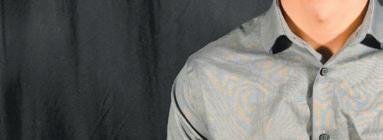
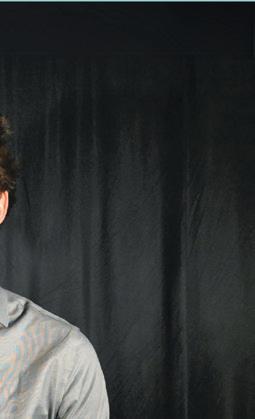
We want to improve accessibility in terms of transportation. Te 201 bus got defunded last year in terms of having free access for students, and that provided a lot of critical transportation for people who live
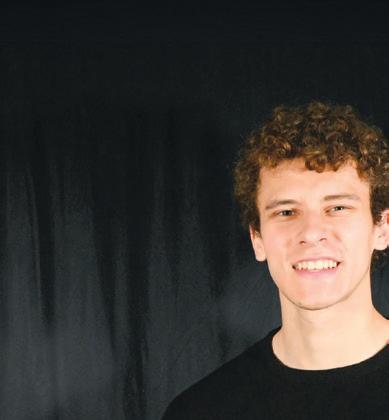

My parents came to this country with nothing. And my dad always told me, ‘You need to make your voice heard. When you think something’s wrong, you call it out, you speak it and you talk about it. You don’t let it go.’ I’ve tried to do that as much as I can, but I also want our students to feel like they can. I was talking to a resident, and she voiced a lot of issues to me about this campus, about how she wasn’t feeling included,
We want to promote cross-club collaborations. A lot of clubs, we feel, on campus don’t really work together as much as we would hope. I think, using ASG resources, we can
far from campus, people who want a safe option for transportation at night and for students with disabilities. So bringing back the 201 would probably be one of the biggest accomplishments that we could have.
promote cross-club collaboration and have clubs work together. Essentially, we want to build a stronger community.



I want ASG to be the defnitive platform for student desires for reform and change on this campus. When a student on this campus feels that something is wrong or that something isn’t being done in a manner that maximally benefts the students, I want their frst line of thought to be, ‘I know who can advocate for me.’ Tat is ASG. And I don’t want that to be something that ends when Gauri and I leave ofce.
how there were institutional reform ideas that she had. John and I really, really want to establish that you can come to us and you can voice your opinions through a QR code, through a box, through your student leaders who can communicate it with us, and you can have that heard and that change made, and you could even talk to our executive members and see how to do that.
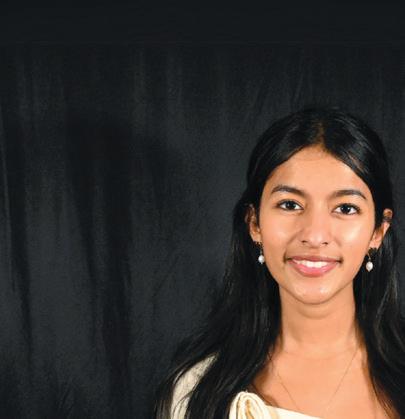



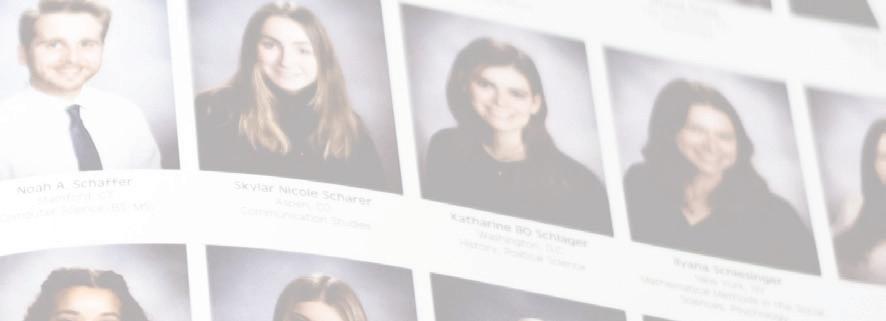














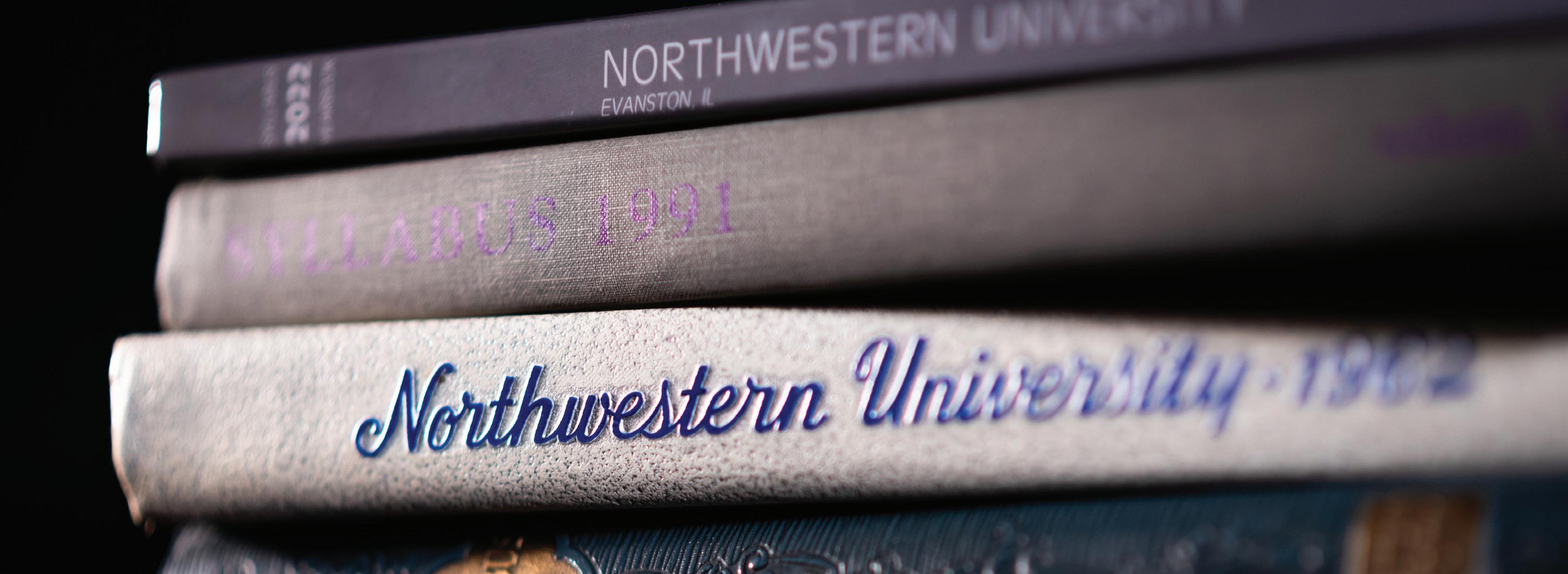



Friendliness is the biggest thing an ASG president can exemplify to show students that we’re approachable. We want to hear your needs. We want to connect with you and not just treat
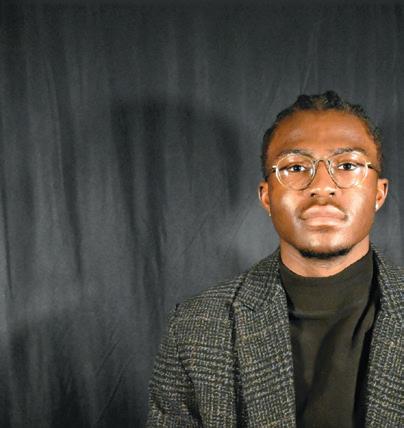
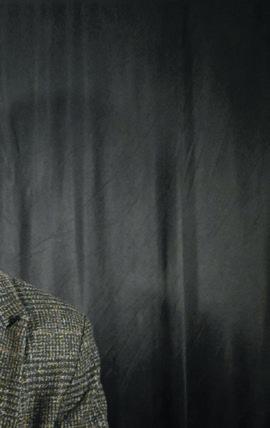
Whenever I speak to someone, just normal students of campus who have no ASG involvement, I ask them, ‘What do you think ASG does?’ Tey tell me, ‘All they do is fund student groups.’ Tat’s obviously false. We’ve done a lot more than that. We’ve introduced
Our moto is the ‘triple f’: food, facilities and fnancial stability. With food, in (NU’s) population, we represent 75 plus countries, but our dining halls don’t rely on that. In terms of facilities, we want to
you as another statistic — as another person who can boost the reputation of our university. There are so many diverse perspectives on this campus. Right now, the University does a decent
do small changes. Obviously, we can’t tear down big buildings and start all over, but we want to promise things that we can accomplish. So simple things like bringing in air conditioning and bringing in
job of uplifting those voices, but there are definitely student groups that don’t have a proper funding to really touch these smaller communities that really do need it, especially in trying times.
One thing I’d like for us to achieve is complete transparency, not just in terms of ASG, but in terms of where our money goes as well. We see what’s happening with all these renovations on campus, and they don’t really make sense to the students. So I think greater transparency in what’s happening, how these decisions are made and exactly where these
initiatives like the Books for ‘Cats. We’ve introduced the Chicago shutle. Even the People’s Resolution that would not be possible without ASG, and that has had monumental efects on the student body. I think the fact that a lot of students don’t know about

that highlights a problem in how ASG is connecting with the student body. One thing that we hope to have accomplished by the end of our term is for students to completely understand the potential of ASG and be more involved in its decision-making.
heaters — not all dorms have (air conditioning). If we’re paying the same tuition as every single student here, we should have access to the same resources that each student has.

BENJAMIN GRIESMEYER


dollars are going are really important for helping us figure out how we can better reinvest that money into the community.
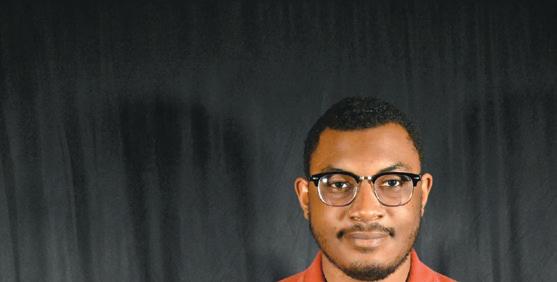































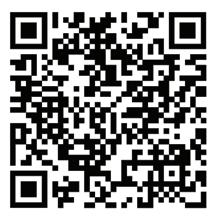

From page 1
door-knocking eforts with subzero temperatures followed by pouring rain, multiple candidates said they aim to boost those eforts soon.
Another infuential factor in candidates’ doorknocking is the type of housing and structures in each ward.
Stephen Hackney, a retired lawyer and challenger for the 1st Ward, said door-knocking eforts vary within his ward because of the wider variety of housing downtown, including diferent apartment complexes and high-rises.
To compensate for the unconventional terrain, the Hackney campaign has emphasized direct mail and speaking to residents at events whenever possible.
“I have building-wide speeches where I’ve been invited in to talk to resident associations at large buildings,” Hackney said. “ Tose will start taking on a more prominent role in February.”
Additionally, Hackney said he has extended canvassing eforts to faith leaders and business owners in the 1st Ward as part of his campaign focuses on renewing downtown Evanston.
Others have found door-knocking a worthy challenge.
From page 1
Meanwhile, Evanston resident Lisa Lauren headed toward the Dog Beach with her two terrier mixes: 5-year-old Rufus and 7-year-old Shirley. She’d seen fellow Dog Beach devotees post online about the winter scenes there.
As she approached the gate, she ran into a woman who “seemed very agitated” and said her dog fell in the water. Lauren said she kept going.
“When I pulled up and parked, I had seen the fre trucks and police all parked at the south end of the beach,” Lauren said. “And I didn’t know what that was, and I didn’t know that it had anything to do with her dog, because she didn’t say that.”
She let her dogs of-leash, and just like usual, they headed toward the south end of the fenced-in beach, Lauren added.
A narrow opening between two chunks of ice appeared, she said.
“Shirley, she is a natural explorer,” Lauren said. “She went over there and just quickly slid right into the water, on the ice.”
Te fre crew headed back to the same ice shelf.
Jacqueline Mendoza, a 2nd Ward challenger and sister of City Clerk Stephanie Mendoza, said she has heard concerns about the practice amid federal deportation raids in Chicago. But her campaign has still sought to engage with residents.
“It doesn’t mater how many tries it takes and how many phone calls it takes, or how many times you had to knock at the same door,” Jacqueline Mendoza said. “You have to keep trying, because our community is worth it.”
Accessible events and outreach
Candidates have also started hosting campaign events for their wards, ranging from more intimate cofee chats at voters’ homes to larger-scale fundraising events.
Shawn Iles, a 3rd Ward contender and the overnight shelter director for Interfaith Action of Evanston, said he has hosted multiple fundraising events for the campaign. He has decided to exclude ticket fees for atendees.
“We felt like it was more important to be inclusive than it was to maximize the amount of money we raised,” Iles said.
In line with increasing the accessibility of campaign events, 7th Ward candidate Parielle Davis said she
Tis time the rescue proved simpler. One member reached down and grabbed Shirley by her harness, Migon said.
Rufus paced around. Yet those few minutes were terror for Shirley’s owner.
“To me, it looked terrifying,” she said. “It looked like the scene from the Titanic when I looked down that narrow slide between these two icebergs — what looked like icebergs at the end of the beach.”
Tough wet, Shirley seemed fne, Lauren said. And it wasn’t the dog’s frst tough moment.
Lauren’s family is Shirley’s third owner. Previous owners had complained that she’d run away too ofen, Lauren said.
“She’s a litle trooper,” she added.
A few people milled about the reopened Dog Beach as their dogs frolicked on the sand Monday. Northwestern Performance Studies Prof. Mary Zimmerman brought her dog, Lotie, and said she was “thrilled” hearing about the reopening.
She had gone to the beach on that fateful Saturday before the dogs fell.
“It was just so hard and slippery at the top of the ledges, and I just was too nervous,” Zimmerman
strives to make her campaign events “family friendly” and accessible to working parents. Davis is a working mother of young children.
“I generally prioritize weekends and early evenings, and I tell people they can always bring their children,” Davis said. “ Tey should feel free to not feel like they have to get a babysiter.”
Other candidates, including three-time 2nd Ward contender Darlene Cannon, have also displayed their previous nonproft work to show their dedication to public service. Cannon previously chaired Evanston’s Equity and Empowerment Commission and has organized several nonproft eforts.
“I think people recognize my leadership, my compassion and my interest and desire to do what’s right for this community,” Cannon said.
Candidates have also expanded their voter outreach eforts through digital spaces like social media.
Kerry Mundy, the other 7th Ward hopeful, has used his campaign’s Facebook and Instagram accounts not only to tell his personal story but to highlight an unconventional campaign goal: run through all the blocks of the 7th Ward.
“You can find out where I’ll be on any given day or week through my Facebook or
said. “So I actually lef.”
Lauren said she doesn’t blame anyone but herself for the accident.
And she won’t return to the beach until everything has melted.
“I feel kind of bad that I had an unfortunate
Instagram, and if you see me along the trail, you can wave. You can stop me to ask a question,” Mundy said.
Some of the election’s younger candidates aim to reach frst-time voters through technological means. Gennifer Geer, a 3rd Ward competitor, said she prioritizes texting as a “two-way communication tool” for her campaign.
“When we send out text blasts and someone responds, I see that response, and I get back to people,” Geer said. “Tat’s proven to be a good way of reaching younger voters.”
As a Generation Z candidate, Geer told Te Daily that one of the key aspects of her platform would be to lower the voting age in municipal elections to 16 years old. Tis would “instill a habit of voting,” expand students’ civic curriculum and increase turnout, she argued.
As candidates prepare for a highly competitive election season, Geer said she hopes voter outreach measures and a focus on mobilization will increase engagement in city politics.
“With more proactive outreach, we can increase turnout,” she added “ Tat’s what I’d like to see from Evanston.”
marisaguerraecheverria2027@u.northwestern.edu
experience there,” Lauren said. “But I’m also relieved that it ended up having a positive outcome. Tank God that lady called the fre department, and they just happened to be there.”
shungraves2027@u.northwestern.edu












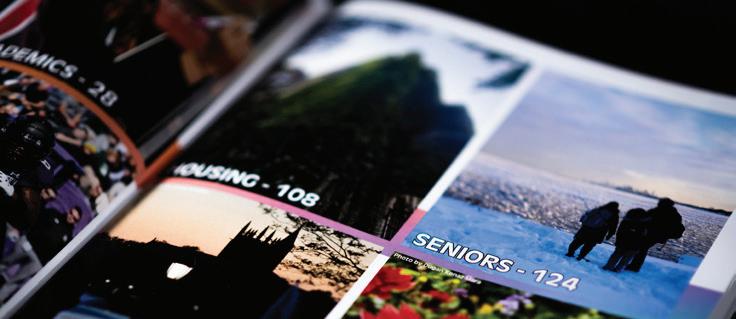

By NINETH KANIESKI KOSO daily senior sta,,er
President Donald Trump signed an executive order Jan. -. that pledged to cancel student visas and deport non-citizen college students who took part in pro-Palestinian protests.
A fact sheet released by the Trump administration declared the new order takes “forceful and unprecedented steps” to combat the “explosion of anti-Semitism” on college campuses.
The sheet promised “immediate action” by the Department of Justice to prosecute “terroristic threats, arson, vandalism and violence against American Jews,” including demanding the removal of “resident aliens” — noncitizens — who violate U.S. laws.
Ed Yohnka, ACLU of Illinois’s director of communications and public policy, described the order as having “dubious legality.”
“People who are here on student visas have a First Amendment right to protest and to demonstrate around any issue that they want,” Yohnka said. “Our First Amendment doesn’t apply to just citizens, it applies to persons and people.”
Yohnka noted that the order does not make it clear what would make non-citizen college students deportable. It did not indicate if it would apply to people who commit criminal acts or people who engage in antisemitic acts, he said.
However, Yohnka said the vagueness of the order and the First Amendment issues makes it difficult to enforce the order in any “meaningful way.”
“My first piece of advice for students on any campus is not to let this administration bully them into or coerce them into not participating in First Amendment activities and to continue to make their voices heard about public policy,” Yohnka said. “It’s an important, historic and traditional role that students play. It’s needed now more than ever before.”
A student who participated in the pro-Palestinian encampment last April, who asked to remain anonymous for fear of retribution, said they thought the order was “horrible”

and a clear violation of free speech because it prevents criticism.
International students are an integral part of the Northwestern community, but this order has terrified many of these students — especially if they have been vocal in the past about Palestine, the student said.
“We’ve seen such a large movement of protesters on college campuses and in communities speaking out about Palestine, and President Trump is trying to use the weaker
status of foreign students in this country and foreigners to silence them,” the student said.
The student said they would love for the University to try to protect international students to the extent it can.
In a statement to The Daily, NU’s Jewish Voice for Peace condemned the order for suppressing “Palestinian solidarity” on college campuses.
JVP stated that the order “demonizes” students at universities in a “fascist” attempt to
deport university students, including members of the Jewish community.
“As Jewish students, we are deeply concerned for the rising antisemitism happening blatantly in the US, and we understand actually ensuring Jewish safety will never involve displacement, deportation and detainment of people whether in the United States or Palestine,” JVP wrote in a statement.
ninethkanieskikoso 2027 @u.northwestern.edu
Winter 2025 | An independent voice since 1923 | Evanston, Illinois
EDITOR IN CHIEF | Lily Ogburn
MANAGING EDITORS | Lexi Goldstein, Henry Frieman, Emily Lichty, Betsy Lecy
MULTIMEDIA MANAGING EDITORS | Kelley Lu, Jillian Moore
CAMPUS EDITOR | Leah Schroeder
ASSISTANT EDITORS | Alexia Sextou, Maya Ikenberry, Melody Xu
CITY EDITOR | Shun Graves
ASSISTANT EDITORS | Sophie Baker, Marisa Guerra Echeverria, Clara Martinez
SPORTS EDITOR | Audrey Pachuta
ASSISTANT EDITORS | Kamran Nia and Eli Kronenberg
OPINION EDITOR | Alexander Hernandez Gonzalez
ASSISTANT EDITOR | Alice Oh
A&E EDITOR | Madeline King
ASSISTANT EDITORS | Dalton Hanna and Marissa Fernandez
IN FOCUS EDITORS | William Tong, Aidan Johnstone
AUDIO EDITOR | Anavi Prakash
ASSISTANT EDITORS | Izzie Jacob, Ingrid Smith
VIDEO EDITOR | Misha Oberoi
ASSISTANT EDITORS | Maia Alvarez, Sydney Gaw
PHOTO EDITOR | Ashley Dong
ASSISTANT EDITORS | Gabe Hawkins, Kate Pollot
ILLUSTRATIONS EDITOR | Isabel Su
ASSISTANT EDITORS | Cayla Labgold-Carroll, Siri Reddy
DATA VISUALIZATION EDITOR | Mary Randolph
ASSISTANT EDITOR | Alex Boyko
DESIGN EDITORS | Danny O’Grady and Rachel Schlueter
ASSISTANT EDITORS | Clare Kirwan, Matt Wasilewski
AUDIENCE ENGAGEMENT EDITOR | Sejal Mehta
ASSISTANT EDITOR | Avantika Singh
SOCIAL MEDIA EDITOR | Paloma Leone-Getten
ASSISTANT EDITOR | Desiree Luo
NEWSLETTER EDITORS | Nineth Kanieski Koso, Taylor Hancock
ASSISTANT EDITOR | Ridhima Kodali
COPY CHIEF | Hannah Webster
COPY EDITORS | Cassie Sun, Caroline Killilea, Ben Shapiro
FEATURES EDITOR | Jake Epstein
ASSISTANT EDITOR | Naomi Taxay
WEB DEVELOPER | Yong-Yu Huang
STAFF EDITOR | David Samson
DEVELOPMENT AND RECRUITMENT EDITORS Janelle Mella, Isaiah Steinberg, Grace Wu, Charlie Spungin
DIVERSITY & INCLUSION CHAIR | Shreya Srinivasan, Sydney Gaw
CROSSWORD & GAMES EDITOR | Francesco Thorik-Saboia
ASSISTANT EDITOR | Miguel Tsang
POLLING EDITOR | Scott Hwang
ASSISTANT EDITORS | Jack Baker, Sai Trivedi, Diya Raj
GENERAL MANAGER | Stacia Campbell
SHOP MANAGER | Chris Widman
BUSINESS OFFICE STAFF
Jenny Aguilar, Branden Chen, Gabe Hawkins, Mia Schmitt, Kevin Tang
ADVERTISING PRODUCTION STAFF
Maia Alvarez, Christina Feng, Sammi Li
Wednesday, February 5, 2025
By CHARLIE SPUNGIN daily se(i)r sta,,er @charliespungin
Even graduate student Britany Lau lost track of how many match points she had during her three-set singles affair against Georgia Tech’s Given Roach.
Eight match points came and went for Lau throughout the second and third sets. It wasn’t until she was up - - . in the third set on her ninth match point that Lau clinched the Wildcats’ ( / - 1 , 0 - 0 Big Ten) / - 2 victory over the Yellow Jackets ( / - . , 0 - 0 ACC), at which point a sea of her teammates flooded Combe Tennis Center’s court 2 to celebrate with her.
“(After) losing such a close set with having that many match points on that point, I literally said to myself that I’m just going to go for it and
be brave,” Lau said. “And it worked out for me.”
Playing at the No. . position, Lau immediately asserted herself in her tilt with Roach. She broke serve in the first game of the set and nearly gave it back at the . - 2 game but saved two break points. In the next game, she broke from 2 - / , /0 - .0 down to serve for the set.
She saved another two break points and won the set 6 - 2 with a backhand slice crosscourt winner after Roach had a poor approach to the net on set point.
“I was playing pretty well,” Lau said. “I had a strategy that was working very well for me.
I think she got a little bit used to it towards the second set … The side that I was attacking, she kind of got a rhythm on it.”
Lau’s break advantage in the second set gave her an opportunity to win the match at - - . on return with two match
points, which Roach erased. At - - / , she had the chance to serve out the match and got up /0 - 1- . Those three match points soon evaporated. At deuce in that game, Lau hit a moonball long after a lengthy rally.
The set advanced to a tiebreak where Lau had a - - . advantage. At 6 - / in the tiebreak, Lau nearly put the match away with a forehand approach shot but hit the ball into the net. She lost four consecutive points, including double-faulting on Roach’s set point, to lose the set 7 - 6 ( 6 ).
“It’s tough to lose a set after having had match point, and it takes a lot of resolve to let go of that and start again,” coach Claire Pollard said. “She’s a veteran. She’s a sixth-year. I think she’s probably had experiences and moments like that.”
Lau’s battle-tested play proved to be too much for
By AUDREY PACHUTA daily se(i)r sta,,er @audreypachuta
With .- seconds remaining and Northwestern clinging to a 7/ - 71 lead, graduate student center Ma hew Nicholson was fouled on his way to the basket. Had he converted both free throws, the game would have been all but decided. But a:er missing the rst a empt — clanking it o the rim — the Trojan bench seemed to breathe a collective sigh of relief before he knocked down the second.
USC guard Clark Slajchert responded by pushing the ball up the court o the inbound pass and drilling a three-pointer. As he released the shot, the whistle blew. Junior guard Blake Smith had fouled Slajchert, sending him to the line for a four-point play that tied the game at 7--7-
With overtime looming as the clock ticked down, junior forward Nick Martinelli became the hero, draining a gamewinning oater to solidify the Wildcats’ (1.-10, /-8 Big Ten) 77-7- win over the Trojans (1.-9, --6 Big Ten).
“Just really proud of our team tonight,” coach Chris Collins said postgame. “ is was a game we had to really dig down and get.”
Adjusting to a new rotation a:er its second-leading scorer senior guard Brooks Barnhizer was ruled out with a season-ending injury, Collins’ group looked to unexpected contributors to ll the void.
When junior guard Justin Mullins pulled up from the top of the key with 11:/6 remaining in the rst half, it took seven shots and contributions from four di erent players before Martinelli nally earned a trip to the free-throw line. e ball bounced from Mullins’ ngertips to graduate student guard Ty Berry, then to Martinelli, and even to graduate student center Keenan Fitzmorris under the basket.
A:er USC jumped out to a quick --0 lead and freshman guard Angelo Ciaravino commi ed an early foul and turnover, coach Chris Collins decided to bring Mullins o the bench less than two minutes into the game. e change paid immediate dividends: Mullins drained a three-pointer within .0 seconds of entering.
“He was bringing the energy,” Collins said postgame. “You felt it right away.”
On the following possession, Berry answered with a similar shot, using a quick duck to avoid a Trojan defender and create an open look.
But those were two of only three shots NU made on its 12 a empts from beyond the arc in the game’s opening 20 minutes.
As both the ’Cats and their opponents struggled to create offensive momentum, each squad turned to small bursts of production to stay alive.
Fitzmorris, who typically adds no more than one or two points per game in 11 appearances this season, stepped up with a rst-half hook shot and tied his season high of eight points in the win.
By hal:ime, NU held a narrow ..-.1 lead, despite shooting just 1.-of-.8 from the eld.
But the ‘Cats made up for their early shooting struggles with a dominant rebounding e ort, outrebounding the Trojans /.-27, including a season-high 2. o ensive boards.
Coming out of the break, Nicholson helped the ’Cats gain early traction, throwing down consecutive alley-oop dunks.
While Mullins had been limited to just one .-pointer in the rst half, he erupted a:er the break, scoring 11 second-half points, including three more treys. Mullins played all but three minutes Tuesday — his most in two seasons at NU.
Mullins’ scoring output was second only to Martinelli, who led all players with 27 points, marking his sixth 2--point game of the season.
In addition to his o ensive performance, Martinelli grabbed 1. rebounds, 10 of which came on the o ensive glass.
Collins said that a:er the team’s loss to No. 17 Wisconsin Saturday, Martinelli felt like he had let his team down without Barnhizer on the oor.
“And, I just told him, I said, ‘Nick, man, you didn’t let us down,’” Collins said. “We need you to be aggressive.”
Joining the huddle in the team’s timeout with 12 seconds on the clock, Barnhizer’s advice to Martinelli was simple: “You got to go win it for us,” he said.
Martinelli did.
audreypachuta2027@u.northwestern.edu
Roach in the third set. She said she adjusted her game to hit the ball more back and forth, focused on hitting balls deep into the court and emphasized getting to the net.
She earned an early break advantage in the set and went up a double-break to go up / - 1 after a forehand down the line forced Roach to hit a difficult backhand slice approach shot that landed out. She held for - - 1 , and she earned an eighth match point at 1 - - , /0 - /0 , which she didn’t win.
She was broken to put the match at - - . . On Roach’s serve, Lau forced deuce from /0 - .0 , setting up her ninth match point. Her mindset was to be aggressive to finally solidify the match.
“If I was going to lose the point, I was going to go out swinging,” Lau said. Her ninth opportunity was a success, as Roach’s shot after a rally went long to give NU
the victory. Lau’s 6 - 2 , 6 ( 6 )7 , 6 - . win marked her third singles win early in the dual season, all of which have come at the No. . slot.
Lau’s winning performance extended beyond her matchwinning singles play. Hours earlier, she and freshman Mika Dagan Fruchtman — the team’s No. 1 doubles pairing — clinched the doubles point for the ’Cats.
After a split result in the No. 2 and No. . doubles slots, the doubles point was left in the hands of Lau and Dagan Fruchtman.
And the ITA’s No. /2 doubles team came through when it mattered most.
Lau and Dagan Fruchtman went up a break early in their doubles match but soon gave it back. At . - . , they went up a break once again, and from that point onwards, they didn’t lose a game for a 6 - . win.
“I thought that (No. 1 )
doubles quality was super high,” Pollard said. “There was a lot of intricate plays that really showed off some really great doubles.”
After an immensely successful fall season, Lau and Dagan Fruchtman were named alternates for the NCAA doubles tournament. The duo has started the dual season . - 0 As Lau won the match for the ’Cats, Dagan Fruchtman was deadlocked at - - - in the third set of her singles match just one court over. As NU obtained its fourth point of the match, Dagan Fruchtman immediately ran over to hug and embrace her doubles partner.
“I saw how she wanted it, how she was fighting,” Dagan Fruchtman said. “She deserved that more than everyone.”
charliespungin2027@u.northwestern.edu
By ELI KRONENBERG and AUDREY PACHUTA daily se(i)r sta,,ers @elikronenberg/@audreypachuta
Northwestern coach Chris Collins announced that team captain and senior guard Brooks Barnhizer is out for the remainder of the season with a foot injury following NU’s 7- - 69 loss to Wisconsin Saturday.
Through tears, Collins explained that Barnhizer had suffered a new injury in the team’s Jan. 12 loss to Michigan State which threatened to end his season, but the Lafayette, Indiana native “begged” to play in the team’s next game against Maryland. Barnhizer played in five games following the injury, but did not practice between those contests, Collins said.
After NU’s loss to Rutgers Jan. 29 , Collins decided to shut Barnhizer down.
“Not only was he not moving well, but I could see that it was just mentally killing him because he couldn’t do the things that he wanted to do,” Collins said.
Barnhizer was averaging a careerbest 17 1 points, 8 8 rebounds, / 2 assists and 2 . steals this season.
“He had set everything up to have this be the best year yet, to lead this program and to take us to new heights,” Collins said. “To have the injuries derail that, it’s unfair.”
In his four seasons donning purple and white, Barnhizer was a key contributor to NU’s back-to-back March Madness appearances. Last season, he scored a game-tying layup to send the ’Cats into overtime in their first-round tournament matchup with Florida Atlantic.
But Barnhizer’s relationship with Collins began long before he helped NU write new chapters of success.
Collins recalled that Barnhizer’s first recruiting visit to Northwestern
came on the same day former NBA star Kobe Bryant died in a helicopter crash. After the visit, Collins said Barnhizer sent him a picture he had drawn of Bryant’s Los Angeles Lakers uniform. According to Collins, Barnhizer told him, “‘When I saw your passion and how much you cared, that was when I knew I wanted to play for you.’” Barnhizer su ered a separate foot injury in August that prevented him from participating in the Wildcats’ preseason tour of Italy and part of NU’s non-conference slate. roughout the regular season, Barnhizer continued to be banged up, knocking his two front teeth out in practice and taking a hard fall on his nose late in NU’s win over Indiana.
“He’d run through the wall for you,” Collins said. “He’d run through the wall for a teammate.” elikronenberg2027@u.northwestern.edu audreypachuta2027@u.northwestern.edu
